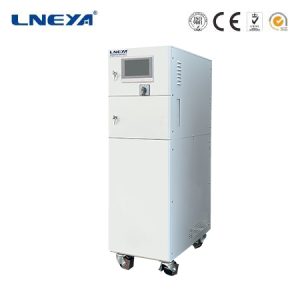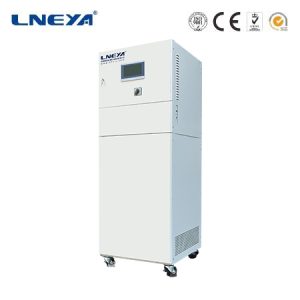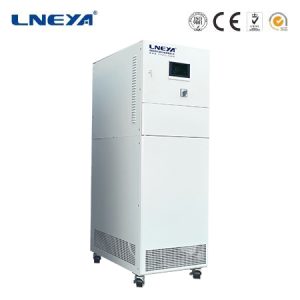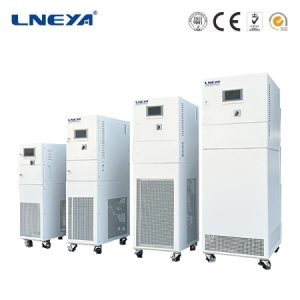Outdoor Water Cooled Chiller
What is an outdoor water cooled chiller?
An outdoor water cooled chiller is one of those water chillers that removes heat from the water used in projects and industrial structures and puts the water back into the running cycle. In effect, a chiller moves heat from a space that requires temperature control to another space. Therefore, the chiller is not a means of generating cold, but a means of dissipating heat, whose task is to facilitate the transfer of unwanted and undesired heat caused by activity to places outside the system.
Cooling towers are specially designed for outdoor water cooled chillers. Because the condenser of a water-cooled chiller uses water as a stimulus and cooling material. The efficiency of a water-cooled chiller increases because wet surfaces are more successful at transferring heat and can do compression work at wetter temperatures.
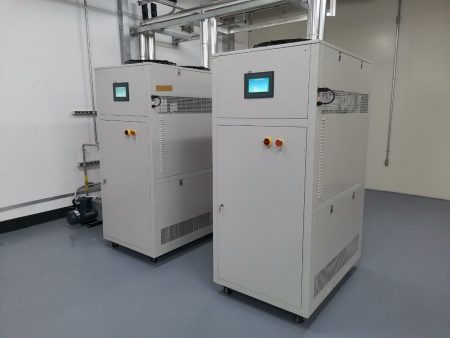
How does outdoor water cooled chiller work?
Water-cooled chillers come into play during the evaporation process, the water and gas produced by the machine are taken to the evaporator and collect all the unwanted heat on the way and then return to the evaporator and store the obtained heat energy. After that, the refrigerant collects this heat and mobilizes it into the condensate, that is, the condenser sends all the collected heat to the cooling tower, and finally the hot air will pass through the cooling coil and dissipate the heat to the atmosphere.
The first stage:
The starting point of this cycle is where the water from the production process enters the evaporator and enters the cooling cycle.
During this part of the cycle, the heat absorbed by the refrigerant first appears in the form of a phase change from liquid to gas phase. As the refrigerant absorbs heat from the water, the temperature of the environment in contact with this part drops, so the water leaves at a lower temperature. This water enters the fan coil and carries the cool air to the desired space.
In fact, the evaporator is a place that, in addition to the current cycle, participates in another cycle, which is located between the evaporator and the water outlet of the cooling device. In fact, hot water enters the chiller evaporator, which cools it and then pumps it throughout the building to where it is needed.
second stage:
The gaseous refrigerant reaches the gas phase in the pre-liquid state and then enters the compressor. In the compressor, the gas condenses and the temperature and pressure increase so that it can enter the next high-pressure stage. The rise in pressure and temperature as it leaves the compressor is important because the refrigerant needs to release heat from inside the condenser, so it must carry enough heat to the condenser.
Another key function of the compressor is to draw refrigerant into the evaporator at the right time, keeping the pressure within the evaporator high enough to absorb the heat again.
The third phase:
The high-temperature gas enters the condenser, where the gaseous refrigerant is converted into a saturated, high-pressure liquid. This is a constant pressure process.
Since the condenser exists in another loop between the cooling towers, the water enters the cooling tower after the temperature rises. Because the main task of the cooling tower in a water-cooled chiller is to cool the consumed water, and the condenser uses this water as its driving material.
Where the excess heat of the water disappears and the water temperature returns to the desired low temperature. The heating process we mentioned earlier occurs in the condenser, releasing the gaseous refrigerant from the heat itself, which is the source of heat in question and needs to be eliminated by the cooling tower. In this way, the water entering the cooling tower from the condenser comes into contact with the air flow, transfers heat to the air, and then returns to the condenser.
The fourth stage:
The expansion valve is the last stage of the refrigerant and the refrigerant in the expansion valve undergoes these processes causing the refrigerant to become a mixture of liquid and gas and the same compounds re-enter the evaporator to resume the cycle.
Correo electrónico: info@lneya.com WeChat ID: +8615251628237 WhatsApp: +86 17851209193
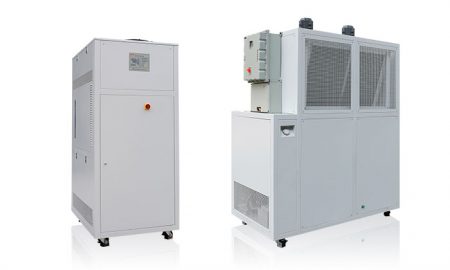 Enfriadoras de precisión / Enfriadoras pequeñas
Enfriadoras de precisión / Enfriadoras pequeñas
El enfriador puede utilizarse ampliamente en diversas industrias y laboratorios, y admite diseños personalizados.
| Temperatura | -18°C ~ +30°C | Serie +5°C ~ +35°C | |||||||
| Capacidad de refrigeración | 0,35 ~ 0,9 kW | 1,8 ~ 50 kW | |||||||
| Nota: Se puede personalizar cualquier rango de temperatura de -150℃ ~ +350℃ y cualquier capacidad de refrigeración. | |||||||||
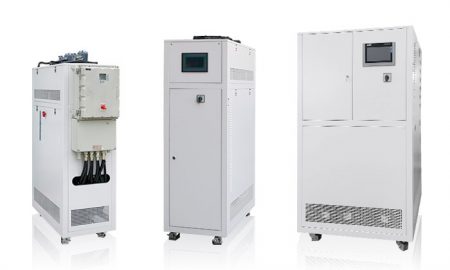
Enfriadoras de recirculación
Nuestro enfriador de recirculación adopta tecnología de refrigeración de baja temperatura, la temperatura es tan baja como -120℃, y varios accesorios son personalizables.
| Temperatura | Serie -25°C ~ +30°C | Serie -45°C ~ +30°C | Serie -60°C ~ -20°C | Serie -80°C ~ -20°C | Serie -120°C ~ -70°C | ||||
| Capacidad de refrigeración | 0,8 ~ 30 kW | 0,75 ~ 12 kW | 0,4 ~ 6kW | 0,2 ~ 6kW | 0,3 ~ 5kW | ||||
| Nota: Se puede personalizar cualquier rango de temperatura de -150℃ ~ +350℃ y cualquier capacidad de refrigeración. | |||||||||
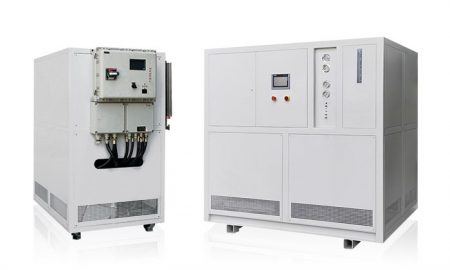
Refrigeradores de baja temperatura
Estamos especializados en la producción de refrigeradores de baja temperatura con un rango de control de temperatura de hasta -150°C, que pueden satisfacer las necesidades de refrigeración de diferentes industrias.
| Temperatura | Serie -25°C ~ -5°C | Serie -45°C ~ -10°C | Serie -60°C ~ -10°C | Serie -80°C ~ -30°C | Serie -110°C ~ -50°C | Serie -150°C ~ -110°C | |||
| Capacidad de refrigeración | 12 ~ 360 kW | 6 ~ 180 kW | 6 ~ 180 kW | 4 ~ 180kW | 2 ~ 120kW | 2,5 ~ 11 kW | |||
| Nota: Se puede personalizar cualquier rango de temperatura de -150℃ ~ +350℃ y cualquier capacidad de refrigeración. | |||||||||
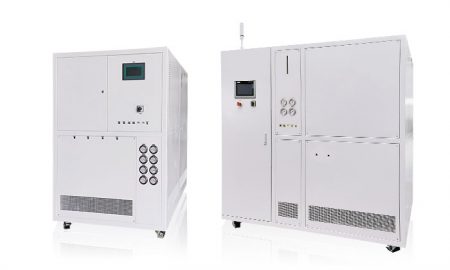 Enfriadoras para pruebas en automoción
Enfriadoras para pruebas en automoción
Simulación de temperatura para pruebas de calidad de vehículos: prueba de duración de baterías, banco de pruebas de inyectores/motores de combustible, prueba de airbags, banco de pruebas de componentes, etc.
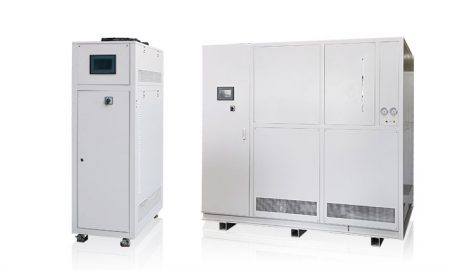
Enfriadoras para semiconductores
Adecuado para el control preciso de la temperatura de los componentes electrónicos. En la fabricación de componentes electrónicos semiconductores para entornos adversos, las fases de ensamblaje de embalajes de CI y de pruebas de ingeniería y producción incluyen pruebas térmicas electrónicas y otras simulaciones de pruebas ambientales.

Refrigeración líquida para sistemas de almacenamiento de energía en baterías
| Tipos | Para estación de conversión | Para batería de almacenamiento de energía | Para estación de carga | ||||||
| Capacidad de refrigeración | 45 kW | 5 ~ 8,5 kW | 4kW | ||||||
| Nota: Se puede personalizar cualquier rango de temperatura de -150℃ ~ +350℃ y cualquier capacidad de refrigeración. | |||||||||

Serie ZLFQ
Unidad de distribución de refrigerante
El equipo de refrigeración líquida es adecuado para pruebas de semiconductores, pruebas de temperatura constante de equipos electrónicos, infraestructura de soporte de servidores de refrigeración y otros lugares de control de temperatura de fluidos.
| Temperatura | +5°C ~ +35°C | +5°C ~ +35°C | |||||||
| Capacidad de refrigeración | 15 ~ 150 kW | 200 ~ 500 kW | |||||||
| Nota: Se puede personalizar cualquier rango de temperatura de -150℃ ~ +350℃ y cualquier capacidad de refrigeración. | |||||||||

Serie de mandriles térmicos MD
Se utiliza para probar dispositivos de radiofrecuencia y dispositivos de potencia de alta densidad (IGBT y MOSFET), y también puede utilizarse para el enfriamiento rápido de paneles planos de laboratorio (plasma, productos biológicos, baterías), etc.
| Temperatura | -75°C ~ +225°C | ||||||||
| Precisión de la temperatura | ±0.1℃ | ||||||||
| Nota: Se puede personalizar cualquier rango de temperatura de -150℃ ~ +350℃ y cualquier capacidad de refrigeración. | |||||||||
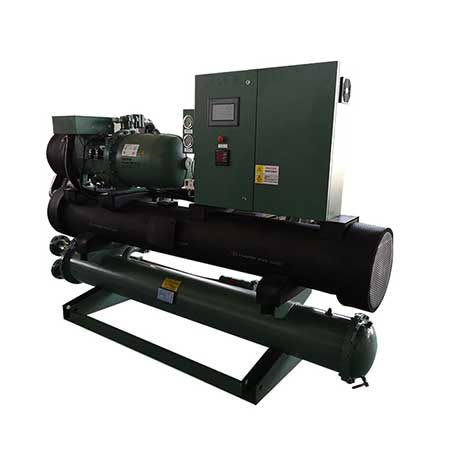
Refrigeradores de tornillo (Diseños a medida)
Refrigeradores de tornillo de baja temperatura y refrigeradores de tornillo a temperatura ambiente
| Temperatura | +5°C ~ +30°C | +5°C ~ +30°C | +5°C ~ +30°C | +5°C ~ +30°C | -25°C ~ +5°C | -25°C ~ +5°C | |||
| Capacidad de refrigeración | 107 ~ 1027 kW (compresor único) | 299 ~ 2134 kW (compresor doble) | 98 ~ 934 kW (compresor único) | 272 ~ 1940 kW (compresor doble) | 48 ~ 467 kW (un compresor) | 51 ~ 497 kW (compresor único) | |||
| Nota: Se puede personalizar cualquier rango de temperatura de -150℃ ~ +350℃ y cualquier capacidad de refrigeración. | |||||||||
 LNEYA
LNEYA
 简体中文
简体中文














































































